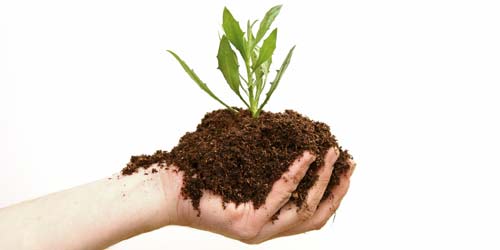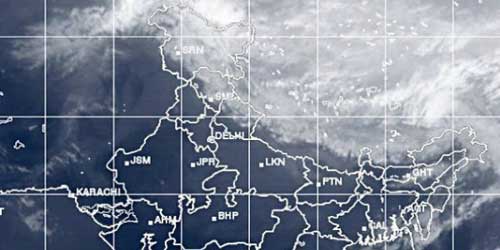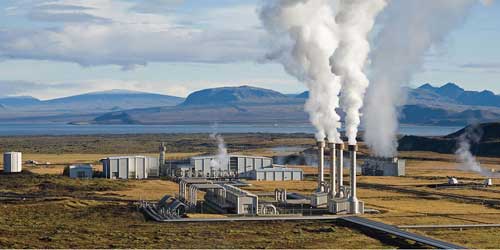Generally, while travelling we observe that the Indian soils colour, texture changes from one region to the other. We cannot grow all type of crops in any soil. Different crops require different soil conditions. Especially, in the agricultural country like India with various crops, nature of the Indian soils play a very important role in planning the types of crops to be grown.
Soils have organic components like humus (formed from buried living organisms) and inorganic components like sand, silt, and clay. When the organic and inorganic components are in equal proportions, then the soil is said to be fertile. For agricultural purposes, we need fertile soils. Where the soils lack fertility, fertilizers are used.
Must Read: Facts about Crops and Soils
DIFFERENT TYPES OF SOILS IN INDIA:
The different types of soils found all over India are:
- ALLUVIAL SOILS
- BLACK COTTON SOILS
- RED AND YELLOW SOILS
- LATERITE SOILS
- ARID SOILS
- FOREST AND MOUNTAIN SOILS
ALLUVIAL INDIAN SOILS:
CHARACTERISTICS:
These are very fertile soils. These are mostly formed by river depositions. The important food crops of India are grown in these soils. With intense cultivation, the areas of these soils are densely populated.
DISTRIBUTION: ALLUVIAL SOILS are distributed in the states of Punjab, Uttar Pradesh, Bihar and west Bengal which are drained by Indus, Ganges, and Brahmaputra river systems. Besides, these are also present in the coastal regions of Orissa, Andhra Pradesh and TamilNadu which are the delta regions of Godavari, Krishna, and Cauvery Rivers.
CROPS GROWN: Rice, Wheat, Sugarcane, Cereals, Pulses and many commercial crops are grown.
BLACK COTTON INDIAN SOILS:
CHARACTERISTICS:
These are black in colour and have good moisture retaining capacity. When dry, they produce cracks and as the name suggests these soils provide the best conditions for growing cotton. Good rainfall and dry conditions simultaneously exist here.
DISTRIBUTION: The Black cotton soils cover most of the Maharashtra state and are distributed in some parts of Gujarat, Chhattisgarh, Madhya Pradesh, Andhra Pradesh and Tamil Nadu.
CROPS GROWN: Cotton (intensively and extensively).
RED AND YELLOW INDIAN SOILS:
CHARACTERISTICS:
The Red and Yellow soils occur in the regions of low rainfall. They are less fertile and need external sources like fertilizers and water supply. Areas of these soils exhibit the typical Indian agricultural situation.
DISTRIBUTION: These soils are distributed in the dry parts of Gujarat, Madhya Pradesh, Chhattisgarh, Orissa, Karnataka, Telangana, Andhra Pradesh and Tamil Nadu.
CROPS GROWN: All types of crops grown in alluvial soils can be grown here but with the extensive external support of water and fertilizers.
Don’t Miss: Agriculture in India: Challenges with Agricultural Marketing and APMC Act
LATERITE INDIAN SOILS:
CHARACTERISTICS:
LATERITE soils are found in the regions of both high rainfall and high temperature. These are low in fertility but are suitable for plantation and horticultural crops due to high moisture.
DISTRIBUTION: Laterite soils are found in most of the Kerala, parts of Karnataka, Orissa, Tamil Nadu and hilly areas of Orissa and Assam.
CROPS GROWN: TEA and COFFEE are grown in Kerala, Karnataka, and Assam. Besides, Horticulture (growing fruits and vegetables) is also practised.
ARID INDIAN SOILS:
CHARACTERISTICS: These are also called as desert soils which occur in the desert areas of the country. These soils lack humus and moisture due to excess heat.
DISTRIBUTION: ARID soils are present in the desert areas of Rajasthan and Gujarat and in some low rainfall plateau regions.
CROPS GROWN:There is almost no cultivation in these soils.
FOREST AND MOUNTAIN INDIAN SOILS:
CHARACTERISTICS:They contain an excess of humus and less minerals and that’s why only Big trees can be grown here.
DISTRIBUTION: As the name suggests, these soils are found in all the forest and mountain regions of the country like Himalayan regions, hilly areas and so on.
CROPS GROWN: Cultivation is not possible in these soils due to lack of inorganic content.
CONCLUSION:
Due to excess cultivation and mining, the soils are highly damaged nowadays which resulted in Soil erosion. Preventive measures are to be taken to protect the soils thereby the country.
Also, Read:
GM Seeds: A Solution to Food Security





Please include availability of various nutrients in different soils. If you can add indian map also with different soils regarding their availability then it will be more beneficial
Laterite soil is best found in Kerala..,.
useful website
Map should be provided as it will help to understand well.
Interesting full of knowledge
Nice
It was helpful , but if possible plz provide the data with map.
Any kind of crop can be grown in forest and mountainous soils. Its just that the topography does not allow large scale cultivation.
Knowledge
Different soils provided with pictures would have been better
ICAR classification of soil seems to be more relavent ,providing 8 types with map and also some analysis of nutrient as having NPK and Iron .
Need some statistical data,map,soil nutrients..plz provide herewith
Soil types are classified according to many more factors. They are classified on the basis of colour, depth, pH, productivity, texture and process of formation.
Soil types according to depth are as follows:
1) Shallow Soil – Soil depth less than 22.5cm. Only shallow rooted crops are grown in such soil, e.g. Paddy, Nagli.
2) Medium deep soil – Soil depth is 22.5 to 45cm. Crops with medium deep roots are grown in this type of soil e.g. Sugar cane, Banana, Gram.
3) Deep soil – Soil depth is more than 45cm. Crops with long and deep roots are grown in this type a soil e.g. Mango, coconut
Major soil types in India
The main types of soil in India are as follows:
1) Red soils
2) Laterites and lateritic soil
3) Black soil
4) Alluvial soils
5) Forest & hill soils
6) Peaty and marshy soils
This is supposed to be a flash animation. You’ll need the flash plugin and a browser that supports it to view it.
Red soils
Red soils have two broad classes:
a) Red loam with cloddy structure and allow content of concretionary materials; and
b) Red earths with loose, Permeable top soil and a high content of secondary concretions. Generally these soils are light textured with porous and friable structure and there is absence of lime Kankar and free carbonates. They have neutral to acidic reaction and are deficient in nitrogen humus, phosphoric acid and lime.
2) Laterites and Lateritic soils
These soils are red to reddish yellow in colour and low in N, P, K, lime and magnesia. These soils are formed in-situ under conditions of high rainfall with alternation dry and wet periods. On account of heavy rainfall there is an excessive leaching of soil colloids and silica hence the soils are porous.
3) Black soils
These are mostly clay soils and form deep cracks during dry season. An accumulation of lime is generally noticed of varying depths. They are popularly known as “Black cotton soils” because of their dark brown colour and suitability for growing cotton. These are also known as Indian regurs.These soils are deficient in nitrogen, phosphoric acid and organic matter but rich in calcium, potash and magnesium.
4) Alluvial soils
These soils occur along rivers and represent the soil materials that have been deposited by the rivers duing flood. Usually they are very productive soils but many are deficient in nitrogen, humus and phosphorus.
5) Forest and hill soils
These soils occur at high elevations as well as at low elevations, where the rainfall is sufficient to support trees. These soils are very shallow, steep, stony, and infertile for the production of field crops. However, they serve a very useful purpose by supplying forest product such as timber and fuel.
6) Desert soils
These are mostly sandy soils that occur in the low rainfall track. They are well supplied with soluble salts but are low in nitrogen and organic matter and have a high pH value. These are quite productive. These are often subjected to wind erosion.
7) Saline & Alkaline soils
These soils occur in areas having a little more rainfall than the areas of desert soils. They show white incrustation of salts of calcium & Magne sium and sodium on the surface. These are poor in drainage and are infertile.
8) Peaty and Marshy soils
These types of soils are found in Kerala, coastal track of Orissa, Sunderban area of W.B. When the vegetation growing in such wet places dies, it decomposes very slowly dues to excessive wetness of soils and after several hundreds of year a layer of partly decayed organic matter accumulates on the surface, giving rise to such peaty and marshy soils. These are black coloured, heavy and highly acidic soils. When properly drained and fertilized, these soils produce good crops of rice.
oooh really..
Comments are closed.